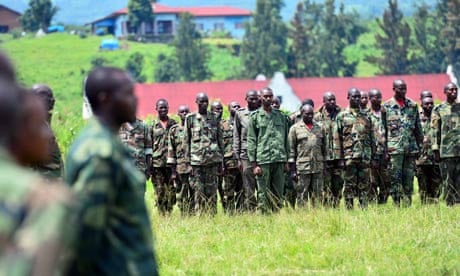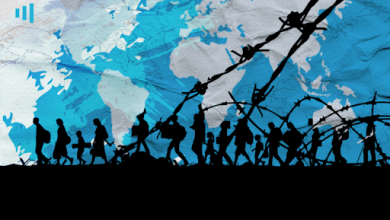FARDC Blames M23 Rebel Group For New Displacements In North Kivu, DR Congo
The FARDC has accused M23 rebel group of being responsible for the displacement of 1,000 DR Congo Citizens To Uganda.

Over 1,000 people fleeing fighting in Rutshuru territory in North Kivu province of the Democratic Republic of Congo have arrived in neighbouring Uganda, authorities in Uganda said.
HumAngle understands that the displaced persons arrived in Uganda on Sunday, Nov. 7.
“We have to date registered more than 1,000 refugees. In the beginning, there were women, children and aged persons but this morning we have seen a large number of men fleeing towards Uganda,” Dan Ndikumwami, the Assistant District Commissioner of Uganda’s Kisoro district said on Monday, Nov. 8.
According to Primrose Natukunda, Director of the Kisoro Red Cross, the refugees have been taken from the border town of Bunagana to the transit centre of Nyakabande where there is enough shelter.
Gunfire continues to be heard in the Bunagana zone which is about 80 km from Goma.
It was not immediately clear which rebel group was involved in the firefight but some civil society sources said it might be the combatants of the March 23 (M23) rebel movement.
DR Congo Army Blames M23 Rebels, M23 Denies
The high command of the Democratic Republic of Congo army, FARDC, has accused the March 23 Movement (M23) of carrying out the Sunday, Nov. 7, attack on Chanzu and Runyonyi villages.
General Sylvain Ekenga, spokesperson of the FARDC said “The insurrectionist movement, M23, attacked the positions of Chanzu and Runyonyi with the intention of carrying out acts of destabilization in the province.”
“Right now, fighting is going on and the armed forces of the Democratic Republic of Congo are determined to finish once and for all with this armed group which must be neutralized in a definitive manner,” the army spokesperson added.
He said the resurgence of the M23 rebellion comes at a time the national army was “engaged in the mutualisation phase of forces with neighbouring countries for the normalisation of relations with a view to ameliorating the security situation in the sub-region for a lasting peace and harmonious development of our countries.”
“Faced with this situation, the FARDC has taken all the dispositions to ensure the failure of this latest incursion by M23 on Congolese soil.”
According to the army high command, the M23 rebels had launched similar attacks in July 2020.
“The M23 had attacked without success the localities of Bigega, Ndiza and Mikenge around Chanzu,” the army spokesperson revealed and recalled “the unsuccessful attempt to attack the Sabinyu, Visoke and Karisimbi hills in the Rutshuru territory in 2017 by this same rebellion.”
He recalled the attack carried out by M23 on Bukavu town at the beginning of this month, declaring that “it is important to recall that from November 2 to 3, another adventure without a future carried out in the town of Bukavu by a militia called Action pour un Congo Nouveau resulted in the neutralization of six militiamen, the capture of 36 others and the seizure of a number of weapons.”
General Ekenga noted that peace has returned to the chief town of South Kivu province.
Meanwhile, the M23 has rejected the accusations by the FARDC and confirmed that it has for over one year now been engaged in peace talks with the government in Kinshasa, where its delegates carried out fruitful exchanges with the administration of Felix Tshisekedi.
“It is thus unfortunate to think that our movement can engage in hostilities with the FARDC at this time when the partnership with the government of the Republic is going on well and when all hope is permitted,” a communique signed by M23 President, Bertrand Bisimbwa declared.
“To be clear, the M23 is not engaged in any confrontations whatsoever with the army in Rutshuru territory.”
The M23, however, indicated that its combatants are still in the Rutshuru territory since 2017, “waiting for the response of the government to the profound causes of the conflict between us and facing acts of provocation on the part of some uncontrolled elements of the FARDC since the year 2020.”
In 2013, more than 1,000 M23 combatants were defeated on the Chanzu hills putting an end to the activism of this rebellion on Congolese soil.
Its combatants crossed into Rwanda while some moved to Uganda where they were housed in camps and finally, a majority of the fighters returned to the marquis in Rutshuru.
Support Our Journalism
There are millions of ordinary people affected by conflict in Africa whose stories are missing in the mainstream media. HumAngle is determined to tell those challenging and under-reported stories, hoping that the people impacted by these conflicts will find the safety and security they deserve.
To ensure that we continue to provide public service coverage, we have a small favour to ask you. We want you to be part of our journalistic endeavour by contributing a token to us.
Your donation will further promote a robust, free, and independent media.
Donate HereStay Closer To The Stories That Matter




